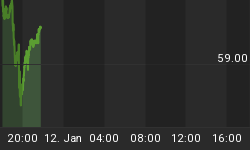Non-Random price behavior is not a myth. It exists and if you are not exploiting it you should be. Here is a closer look...
The CET Capital investment strategies aim to exploit persistent price behavior of the small cap stock indices and mutual funds. While some of CET Capitals' methodologies are proprietary, exploiting persistent price behavior; which is the foundation of what we do is not. Persistency, as defined by Gil Blake, is a combination of volatility and historical reliability. Below I will summarize an interview in Jack Schwagers' book, The New Market Wizards, which eloquently describes how in the 1980's a successful money manager named Gil Blake capitalized on persistency. My aim is to demonstrate two ways of identifying non-random, persistent price behavior. The first will describe non-random price behavior in terms of probability. The second will show persistency in terms of compounded annual return and drawdown. My goal is to convince you that exploitable persistent trends have existed as far back as your grandparents can remember and they exist today. Simply put, you should be invested with a manager who exploits these trends.
The history of persistency
Gil Blake was one of the first money managers to exploit non-random price behavior and talk about it. Below is a summary of his interview from Jack Schwagers' book The New Market Wizards. The chapter is called "Gil Blake: The Master of Consistency".
Gil Blake was a mutual fund timer who was able to achieve gains of over 20 percent per year. Blake's life changed in the early 1980's when a friend presented him with evidence of non-random market behavior. When choosing which mutual funds to trade he "would rank each sector based on a combination of volatility and historical reliability, which he called persistency". He became so confident in monetizing these persistent trends that he took out four successive mortgages on his house over a three year period so he could invest more money in his strategy. When he started to examine managed sector funds he was amazed "that the daily average price change in a given sector had anywhere between a 70 percent to 82 percent chance of being followed by a move in the same direction the following day." One of the things that Blake said was, "If the odds are 70 percent in your favor and you make fifty trades, it's very difficult to have a down year". His high trading frequency eventually got him banned from Fidelity and was also a large influence on the introduction of what are now known in the mutual fund industry as early redemption fees. His successes were also a tremendous influence on CET Capital. I want to note here that with the introduction of high beta inverse mutual funds from fund families like ProFunds and Potomac hedging can be used instead of selling. As of March 2006 CET Capital is trading a short term strategy which incorporates hedging instead of selling, therefore actively trading these managed mutual funds is now once again possible.
Analyzing persistency
A more familiar way of looking at "Persistency of Price" (POP) is to think of it in terms of "winning streaks". Below POP is shown for consecutive up days ranging from two days (POP2) to six days (POP6) for three of the major US indices.
|
| Start date of analysis: September 9, 1988. End date of the analysis: December 30, 2005. Statistics were compiled using FastTools analysis software and FastTrack data. |
Simply put the Russell 2000 is the most persistent index in this group. An up close has a 62 percent chance of being followed by an up close in the same direction the following day (POP2), while the probability of having three up closes in a row is 39 percent (POP3). Like Blake, I look at it is like this, if you are trading something that has a 62 percent probability of closing up tomorrow if today is an up day and you are making between forty and sixty trades per year it will be difficult to have a down year.
Therefore if you simply buy on an up close and sell on a down close in the long run you capture the heart of the price move and beat buy and hold. Below there are two sets of charts which compare trading for persistency vs. using the buy and hold approach of the respective index from its inception. The top group of charts is thumbnails and will open to bigger charts if you click on them. These charts represent the simulated compounded growth of a $1000 using the above simulation rules for the S&P 500, NASDAQ 100 and our trading vehicle of choice the Russell 2000. The bottom table takes a closer look at each strategies compounded annual return (CAR), maximum drawdown and ulcer index (UI).
Trading for Persistency vs. Buy & Hold
Growth of $1000

Click to open larger image in new window.
A closer look at the statistics behind the strategies.

In each of these examples trading for persistency blows away buy & hold. Historically, using this simple approach not only increases your compounded annual return it reduced drawdown significantly. The point I want to drive home here is short term trading for persistency works and it works better on the more persistent indices (Russell 2000) then the less persistent indices (S&P 500), hence why CET Capital trades the Russell 2000. The point is you should have a manager who focuses on persistency in your portfolio.
Note: CET Capital uses this short term trading approach as one of our triggers in all of our Short Term strategies. We have also identified periods of time in which the markets are more persistent. Our job is to sit on the sidelines when the day to day consistency of the market is low and invest when it is high. To further capitalize on market persistency we have identified the best periods of time in which to use leverage.

















